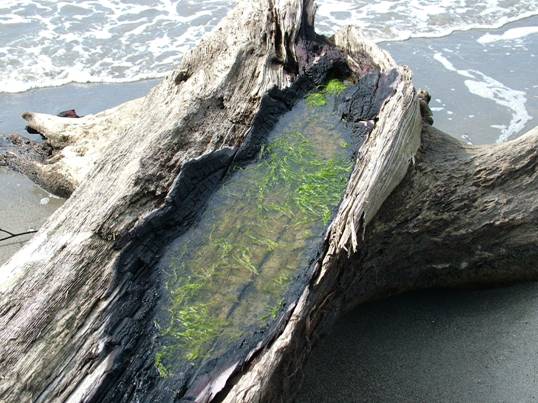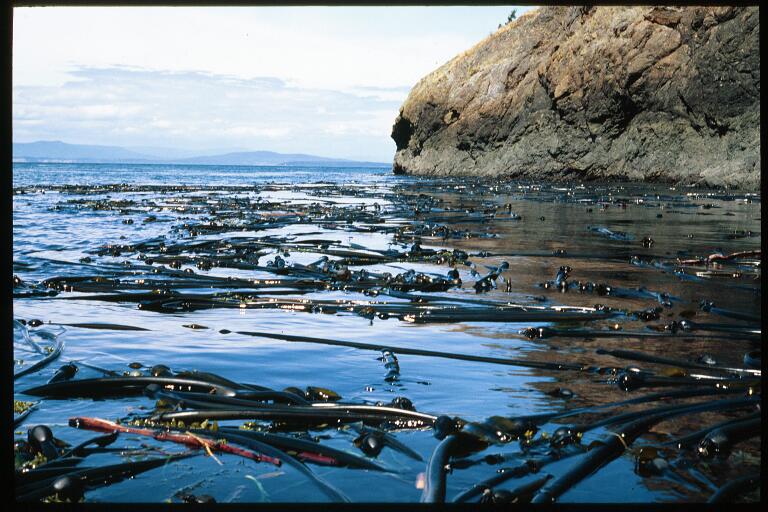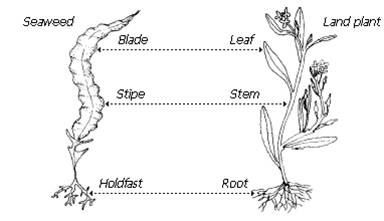
Seaweeds and Seagrasses
General Biology
World wide there are 7000 estimated seaweeds, 4000 microalgae and 50 seagrasses. Here in the Pacific Northwest we have an estimated 700 of these species making our area one of the richest in seaweed biodiversity in the world. (Harbo, 1999)
Sites visited:
Fox Island - South Puget Sound
Trip aboard the Centennial - San Juan Island
Argyle Lagoon - San Juan Island
Cattle Point - San Juan Island
Salt Creek - Olympic Peninsula
Both seaweeds and seagrasses are primary producers, this means they are at the base of the food chain and support much of the life that lives in our oceans. Primary producers make their own food from the sun by photosynthesis. . Photosynthesis: Sun + CO2 + H2O = Nutrients for the Plant or Seaweed + Oxygen for us Both seaweeds and seagrasses use photosynthesis to support themselves, but they absorb the nutrients in very different ways. Plants (seagrasses) have roots, stems and leaves making up a complex system that transports the nutrients from their roots to other parts of the plant. Algae (seaweeds) absorb what they need on a cellular level through any part of their structure. The structure of seaweeds is a bit different then that of a plant, but it still has some of the same elements. Seaweeds have a holdfast, stipe and blades, which look similar to roots, stems and leaves on a plant (see picture)
The holdfast anchors the seaweed to a rock or other sturdy object, but does not serve as the primary sorce of absorption for water and nutrients like in a plant. The stipe acts as a middleman between the holdfast and the blade (many seaweeds don’t have a pronounced stipe and appear to go from the holdfast to the main bladed portion of the plant.) The blade is usually the largest and most noticeable part of the seaweed. It floats on or near the surface and absorbs as much sun light as possible. Because seaweeds and seagrasses rely on sunlight to support themselves they only inhabit waters that the sun can penetrate. In the Pacific Northwest, seaweeds and seagrasses are found from high intertidal zones to about 20m deep, depending on plankton levels and the clarity of the water. |
 |
 |
|||
 |

